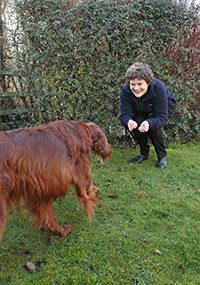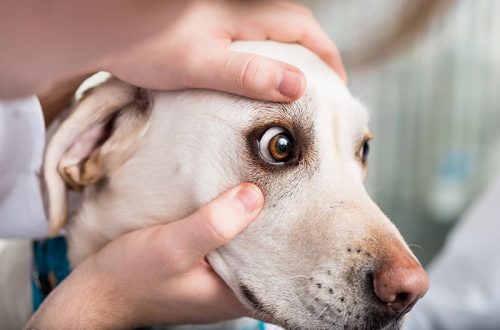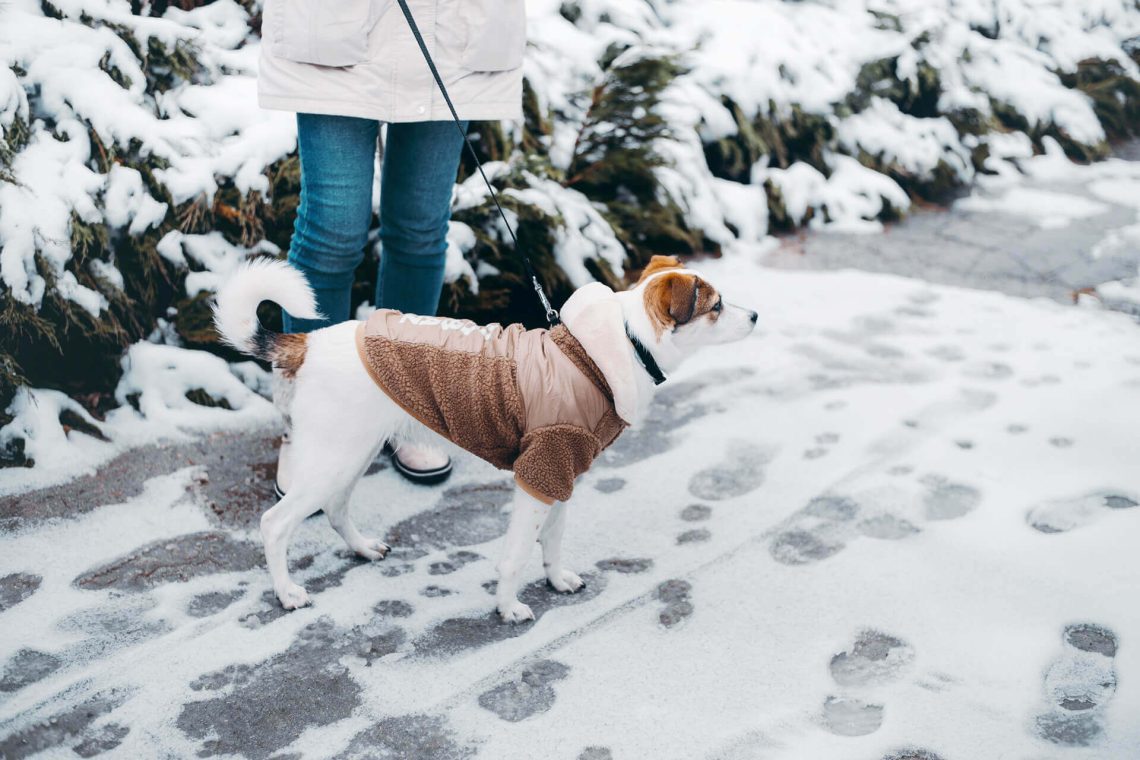
Reagents and paws: how to walk a dog in winter?
Reagents ulcerate the paw pads, destroy the claws, clog between the fingers, forming poorly healing wounds. Not everyone can cope with this problem by walking only in their own yard. How to be a city dweller?
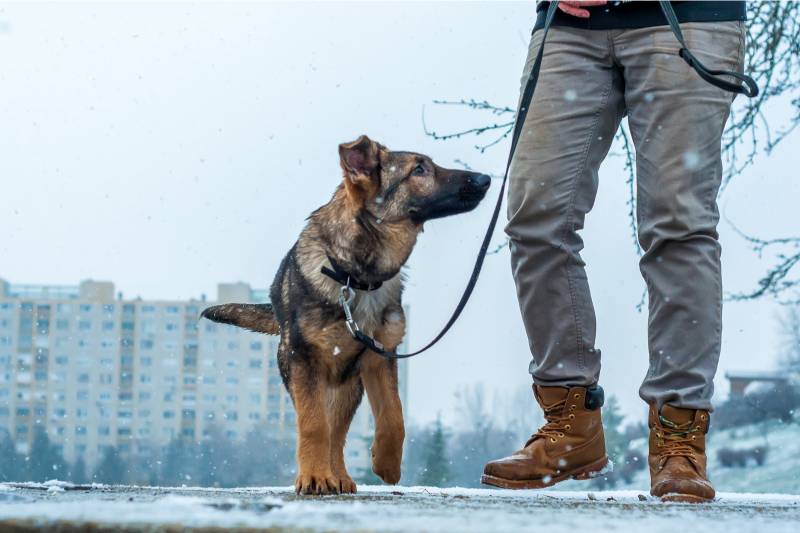
Contents
Shoes as salvation
The ideal option is to teach your dog to walk in boots. You can buy dog shoes of various types, insulation and sizes at pet stores. To choose the right size, you need to take measurements from the paw. Place the dog’s paw on a sheet of paper and carefully circle it with a pen or pencil. Add 0,5 cm to the claws in length. Measure length and width. Next, in the store, select suitable shoes based on the size chart. Dog shoes should ideally have non-slip soles, be waterproof and fasten with at least 2 Velcro.
But buying shoes is not enough – you also need to teach your dog to wear them. Depending on the nature of the animal, you can put on your pet’s shoes and immediately go for a walk, but more often you have to work out a little first – to walk around the house in these shoes for a week.
Wax, cream and other protective products
But what about those whose dog categorically does not want to wear shoes? Of course, you can contact the dog handler and ask to teach your pet, but you can treat the paws with protective equipment.
The most reliable of them is wax. They lubricate the pillows. You need to look at the composition – propolis and calendula should be added to a quality product.
A cream or balm will also work. Again, check the ingredients. There must be wax, petroleum jelly, paraffin.
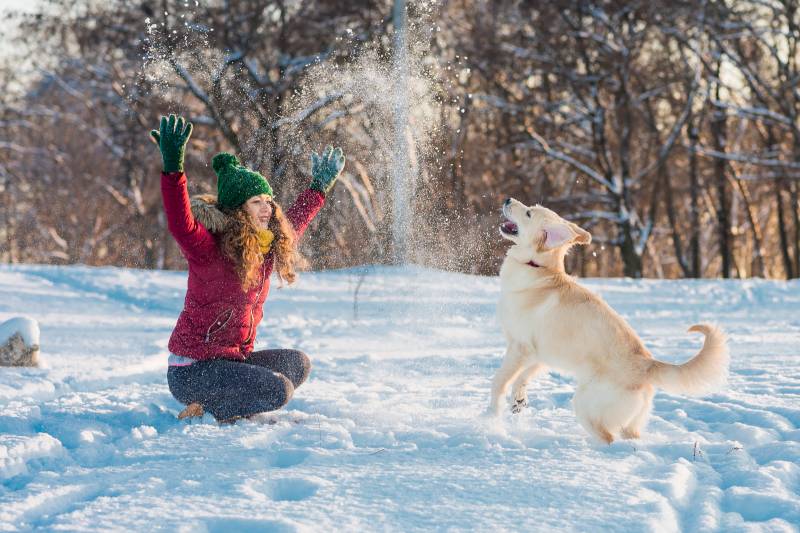
Protective sprays sold in pet stores are most often ineffective in winter.
In addition, after walking, it is necessary to wash the paws of the animal well. Wiping with a damp cloth will remove dirt, but will not wash away poisonous substances. Paws should be washed in a bowl or under running water.
If the wound has already appeared, it should be washed with chlorhexidine and anointed with some kind of healing ointment. Go outside only in shoes or with a bandaged paw.
How to quickly make a temporary “boot” for a dog:
Depending on the size of the pet, take a fingertip, a household rubber glove, or an uninflated balloon. If the paw has already suffered from reagents, put a cotton pad with ointment on the wound, then put on a rubber case, then an old sock or other suitable cover and fix the structure with adhesive tape.
If the dog licked off the reagents
But reagents are dangerous not only for dog paws. The animal can be poisoned by chemicals. How can a poisonous reagent enter an animal’s body? There are only two ways. The first is that the dog ate snow sprinkled with chemicals. The second – the dog licked the injured paws.
Symptoms of poisoning are standard: lethargy, fever, refusal to eat, diarrhea, vomiting. But even convulsions, severe tachycardia, bronchospasm phenomena can be observed. The severity of poisoning depends on many factors: on the general health and strength of the pet’s immune system; from the amount of poison that has entered the body; age – older dogs and puppies are at risk.
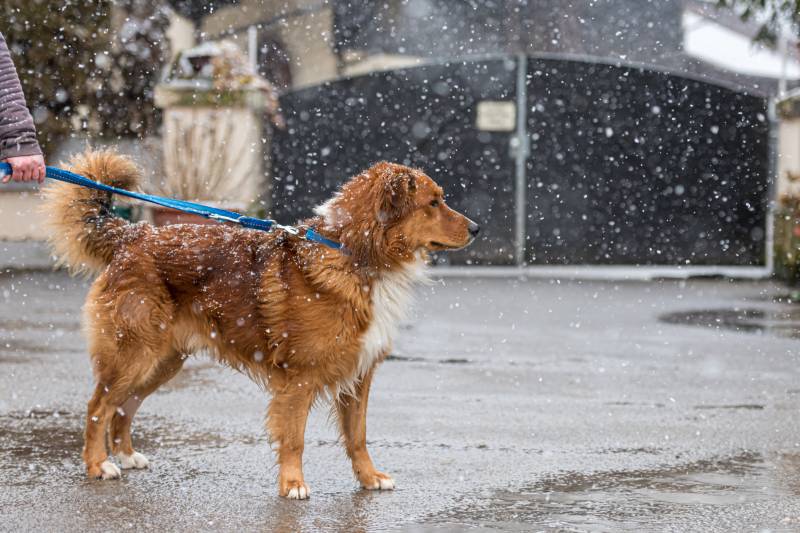
If you notice anxiety symptoms in your dog, the best solution is to contact your veterinarian immediately. A face-to-face visit to the clinic may not be required. If you are not sure that the dog was poisoned by chemistry, but you suspect lethargy due, for example, to excessive physical exertion, you can consult in the Petstory application. You can describe the problem to the doctor and get qualified help (the cost of the first consultation is only 199 rubles!).
By asking questions to the doctor, you can exclude the disease, and in addition, you will receive recommendations for further solving this problem. You can download the application from .



